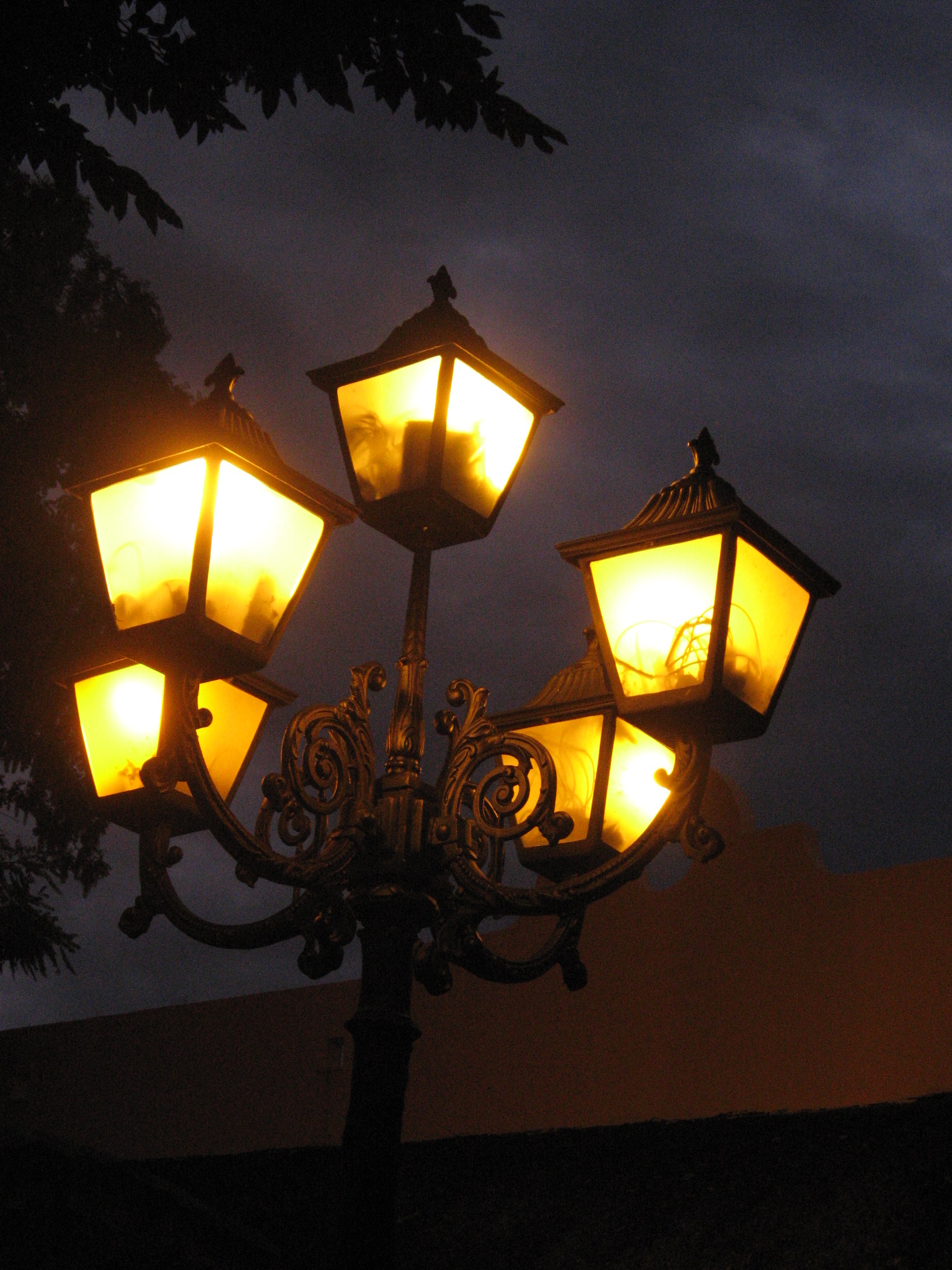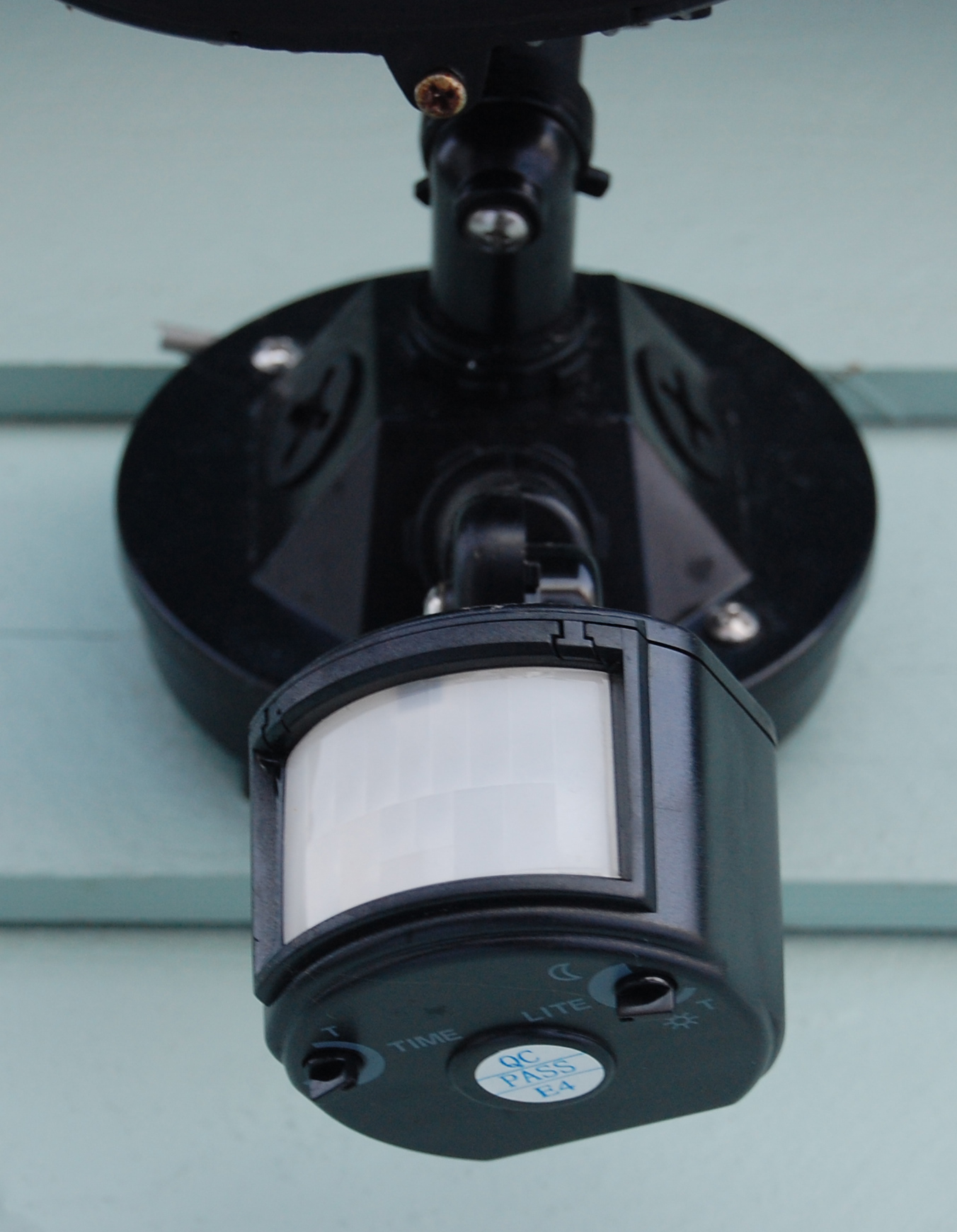|
Yard Light
A yard light or garden lantern is a free standing exterior light fixture in gardens and landscaped settings. They are usually illuminated by electricity, but occasionally natural gas, and are usually placed near an outdoor path or driveway to provide visibility in dark areas or areas that become dark at certain times. A solar lamp is operated by batteries charged by solar panels during the day. Electric garden lanterns are usually controlled from inside a building by a wall switch, or by a photoelectric sensor attached to the lamp or nearby. Yard lamps intended to provide security lighting may be controlled by a motion sensor. Gas lanterns that burn continually may be prohibited by some jurisdiction's greenhouse gas environmental regulations. Yard lamps are weather resistant. Water penetration can extinguish the flame, shatter the bulb, or short circuit the wiring. See also * Landscape lighting * Architectural lighting design Architectural lighting design is a field of ... [...More Info...] [...Related Items...] OR: [Wikipedia] [Google] [Baidu] |
Light Fixture
A light fixture (US English), light fitting (UK English), or luminaire is an electrical device containing an electric lamp that provides illumination. All light fixtures have a fixture body and one or more lamps. The lamps may be in sockets for easy replacement—or, in the case of some LED fixtures, hard-wired in place. Fixtures may also have a switch to control the light, either attached to the lamp body or attached to the power cable. Permanent light fixtures, such as dining room chandeliers, may have no switch on the fixture itself, but rely on a wall switch. Fixtures require an electrical connection to a power source, typically AC mains power, but some run on battery power for camping or emergency lights. Permanent lighting fixtures are directly wired. Movable lamps have a plug and cord that plugs into a wall socket. Light fixtures may also have other features, such as reflectors for directing the light, an aperture (with or without a lens), an outer shell or housing f ... [...More Info...] [...Related Items...] OR: [Wikipedia] [Google] [Baidu] |
Solar Lamp
A solar lamp, also known as a solar light or solar lantern, is a lighting system composed of an LED lamp, solar panels, battery, charge controller and there may also be an inverter. The lamp operates on electricity from batteries, charged through the use of solar panel (solar photovoltaic panel) Solar-powered household lighting can replace other light sources like candles or kerosene lamps. Solar lamps have a lower operating cost than kerosene lamps because renewable energy from the sun is free, unlike fuel. In addition, solar lamps produce no indoor air pollution unlike kerosene lamps. However, solar lamps generally have a higher initial cost, and are weather dependent. Solar lamps for use in rural situations often have the capability of providing a supply of electricity for other devices, such as for charging cell phones. The costs of solar lamps have continued to fall in recent years as the components and lamps have been mass-produced in ever greater numbers. History Some ... [...More Info...] [...Related Items...] OR: [Wikipedia] [Google] [Baidu] |
Photoelectric Sensor
A photoelectric sensor is a device used to determine the distance, absence, or presence of an object by using a light transmitter, often infrared, and a photoelectric receiver. They are largely used in industrial manufacturing. There are three different useful types: opposed (through-beam), retro-reflective, and proximity-sensing (diffused). Types A self-contained photoelectric sensor contains the optics, along with the electronics. It requires only a power source. The sensor performs its own modulation, demodulation, amplification, and output switching. Some self-contained sensors provide such options as built-in control timers or counters. Because of technological progress, self-contained photoelectric sensors have become increasingly smaller. Remote photoelectric sensors used for remote sensing contain only the optical components of a sensor. The circuitry for power input, amplification, and output switching is located elsewhere, typically in a control panel. This allows ... [...More Info...] [...Related Items...] OR: [Wikipedia] [Google] [Baidu] |
Motion Sensor
A motion detector is an electrical device that utilizes a sensor to detect nearby motion. Such a device is often integrated as a component of a system that automatically performs a task or alerts a user of motion in an area. They form a vital component of security, automated lighting control, home control, energy efficiency, and other useful systems. Overview An ''active'' electronic motion detector contains an optical, microwave, or acoustic sensor, as well as a transmitter. However, a ''passive'' contains only a sensor and only senses a signature from the moving object via emission or reflection. Changes in the optical, microwave or acoustic field in the device's proximity are interpreted by the electronics based on one of several technologies. Most low-cost motion detectors can detect motion at distances of about . Specialized systems are more expensive but have either increased sensitivity or much longer ranges. Tomographic motion detection systems can cover much larger are ... [...More Info...] [...Related Items...] OR: [Wikipedia] [Google] [Baidu] |
Lantern
A lantern is an often portable source of lighting, typically featuring a protective enclosure for the light sourcehistorically usually a candle or a wick in oil, and often a battery-powered light in modern timesto make it easier to carry and hang up, and make it more reliable outdoors or in drafty interiors. Lanterns may also be used for signaling, as torches, or as general light-sources outdoors. Use The lantern enclosure was primarily used to prevent a burning candle or wick being extinguished from wind, rain or other causes. Some antique lanterns have only a metal grid, indicating their function was to protect the candle or wick during transportation and avoid the excess heat from the top to avoid unexpected fires. Another important function was to reduce the risk of fire should a spark leap from the flame or the light be dropped. This was especially important below deck on ships: a fire on a wooden ship was a major catastrophe. Use of unguarded lights was taken so serious ... [...More Info...] [...Related Items...] OR: [Wikipedia] [Google] [Baidu] |
Greenhouse Gas
A greenhouse gas (GHG or GhG) is a gas that Absorption (electromagnetic radiation), absorbs and Emission (electromagnetic radiation), emits radiant energy within the thermal infrared range, causing the greenhouse effect. The primary greenhouse gases in Atmosphere of Earth, Earth's atmosphere are water vapor (), carbon dioxide (), methane (), nitrous oxide (), and ozone (). Without greenhouse gases, the average temperature of Earth#Surface, Earth's surface would be about , rather than the present average of . The atmospheres of atmosphere of Venus, Venus, atmosphere of Mars, Mars and atmosphere of Titan, Titan also contain greenhouse gases. Human activities since the beginning of the Industrial Revolution (around 1750) have increased the Carbon dioxide in Earth's atmosphere, atmospheric concentration of carbon dioxide by over 50%, from 280 parts per million, ppm in 1750 to 421 ppm in 2022. The last time the atmospheric concentration of carbon dioxide was this high was over 3&nbs ... [...More Info...] [...Related Items...] OR: [Wikipedia] [Google] [Baidu] |
Landscape Lighting
Landscape lighting or garden lighting refers to the use of outdoor illumination of private gardens and public landscapes; for the enhancement and purposes of safety, nighttime aesthetics, accessibility, security, recreation and sports, and social and event uses. Light pollution exacerbated by excessive, misdirected or obtrusive use of light, but even carefully used light fundamentally alters natural conditions. As a major side-effect of urbanization, it is blamed for compromising health, disrupting ecosystems and spoiling aesthetic environments. History The public landscape and gardens have been illuminated for as long as interior structures have – for beauty, security, circulation, and social occasions; since ancient times by firelight from wood, candles, and animal-plant oil fells in torches, sconces and lanterns. Since the 17th century's introductions of new interior illumination fuels, the technology has then been used outdoors and in gardens. As systems were developed f ... [...More Info...] [...Related Items...] OR: [Wikipedia] [Google] [Baidu] |
Architectural Lighting Design
Architectural lighting design is a field of work or study that is concerned with the design of lighting systems within the built environment, both interior and exterior. It can include manipulation and design of both daylight and electric light or both, to serve human needs. Lighting design is based in both science and the visual arts. The basic aim of lighting within the built environment is to enable occupants to see clearly and without discomfort. The objective of architectural lighting design is to balance the art and the science of lighting to create mood, visual interest and enhance the experience of a space or place whilst still meeting the technical and safety requirements. Overview The purpose of architectural lighting design is to balance the characteristics of light within a space to optimize the technical, the visual and, most recently, the non-visual components of ergonomics with respect to illumination of buildings or spaces. The technical requiremen ... [...More Info...] [...Related Items...] OR: [Wikipedia] [Google] [Baidu] |
Light Fixtures
Light or visible light is electromagnetic radiation that can be perceived by the human eye. Visible light is usually defined as having wavelengths in the range of 400–700 nanometres (nm), corresponding to frequencies of 750–420 terahertz, between the infrared (with longer wavelengths) and the ultraviolet (with shorter wavelengths). In physics, the term "light" may refer more broadly to electromagnetic radiation of any wavelength, whether visible or not. In this sense, gamma rays, X-rays, microwaves and radio waves are also light. The primary properties of light are intensity, propagation direction, frequency or wavelength spectrum and polarization. Its speed in a vacuum, 299 792 458 metres a second (m/s), is one of the fundamental constants of nature. Like all types of electromagnetic radiation, visible light propagates by massless elementary particles called photons that represents the quanta of electromagnetic field, and can be analyzed as both waves and particl ... [...More Info...] [...Related Items...] OR: [Wikipedia] [Google] [Baidu] |


.png)



.jpg)